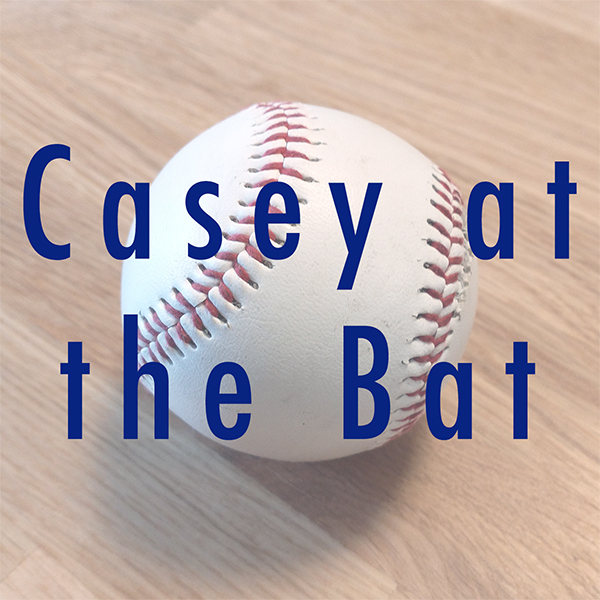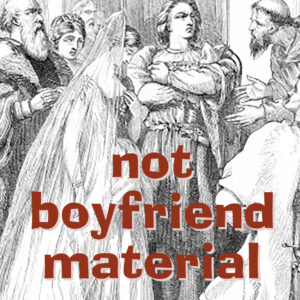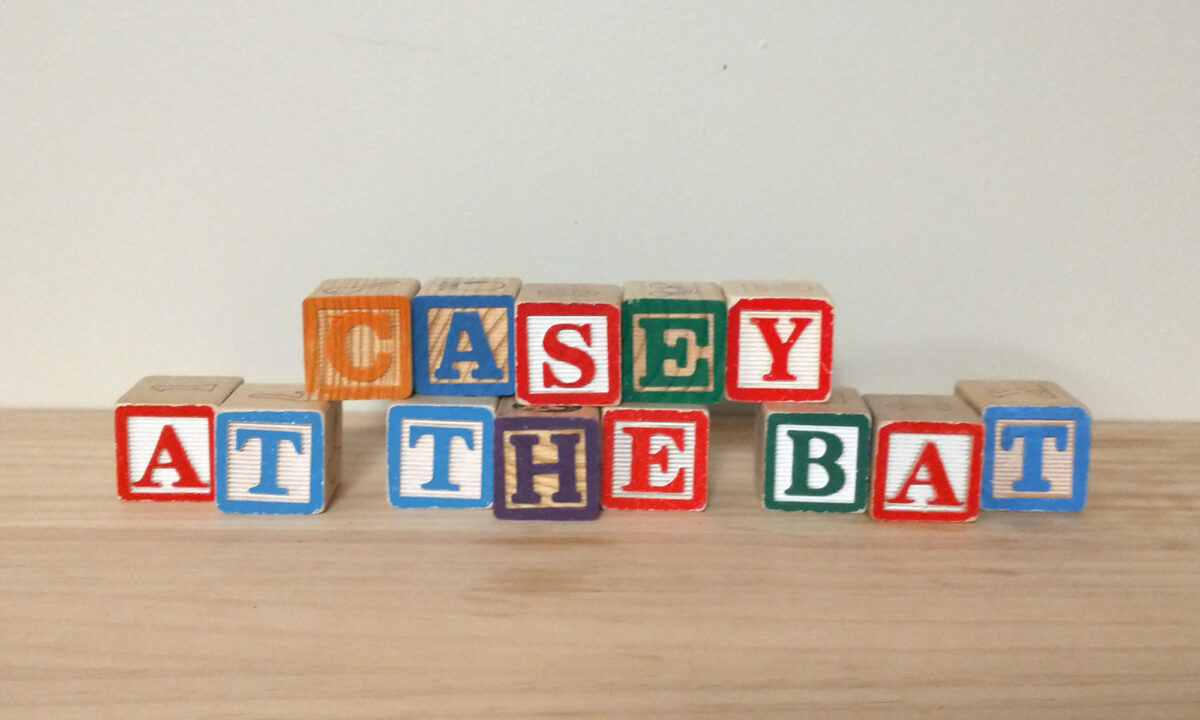This is a recording of “The History of England, from the Reign of Henry the 4th to the Death of Charles the 1st” by Jane Austen, written when the author was only 16 years old. It was illustrated by Jane’s sister Cassandra and completed in 1791.
Tag: comedy
137 – Peter Pan Goes Wrong made us LAUGH
Co-hosts T.Q. Townsend and Chloë Townsend recently went to the Curve Theatre in Leicester to see Peter Pan Goes Wrong, a hilarious comedy interpretation of J.M. Barrie’s classic children’s play and novel about Peter Pan, the Darling Children, the Lost Boys, and of course, Captain Hook. The play was put on by Mischief Theatre, a company that specializes in the most spectacularly silly shows we’ve ever seen.
We talk about which parts of the technical production were the most impressive, which parts of the story were the most interesting, and which moments just made us laugh the hardest. This play lovingly pokes fun at a story we all know very well, and that’s why it works. It’s also an example of how classic children’s stories never go out of style, and that there is always a fun, creative way to reinterpret them.
The traveling tour of Peter Pan Goes Wrong concluded in our city of Leicester, and we were lucky to catch one of the very last shows. But you can see it on video, or hopefully one day see it on stage as we did! Make sure you get there early though, because the show starts before “the show.”
84 – Casey at the Bat
“Casey at the Bat” by Ernest Thayer is the most beloved poem in American Literature. It’s mock-heroic epic about . . . a baseball game. It’s very funny and makes a great selection for children to recite. It’s also a great way to introduce students to common poetic devices as well as themes from classic literature that are often referenced by modern writers.

Activity: Poetic Device Hunt
Give students a printed copy of “Casey at the Bat.” Have students circle and label examples of the following poetic devices in the poem:
- Hyperbole
- Alliteration
- Enjambment
- Personification
- Metaphor
- Simile
- Caesura
Additionally, students can research the references in this poem to great works of myth and literature, such as the source of the phrase “hope springs eternal” and the story of Echo from Greek mythology. Students can also research the poetic meter used in this poem (iambic heptameter, also called a “fourteener”), which was commonly used in Renaissance-era poetry.
Activity: Write Your Own Epic Sports Poem
Ask students to write a poem in the style of “Casey at the Bat” based on their own favorite sports moments. Poems should describe a heartbreaking moment in sports and make use of language that is pretentious, florid, and overly grandiose. Students can then contrast this language with fairly common everyday language. If possible, poems should reference people or events from mythology or come from famous poems or stories about gods, royalty, and legendary people.
Activity: The Rules of Baseball
In a PE or baseball team setting, ask students to explain the scenario described in “Casey at the Bat” using the rules of baseball. Students should explain why Casey is in a critical position, as it is the ninth inning, the team is behind by two points, and two players are on base with two outs already on the board. Students should be able to explain that there are four possible outcomes:
- Casey is able to hit a single and get on base, sending Flynn home for a run and leaving Blake on base. The score would then be Mudville 3, Visitors 4. The Mudville Nine would then send its next batter up, and the game would depend on him.
- Casey is able to hit a double or triple and get on base, sending Flynn and Blake home. This would leave the score tied 4-4, sending the game into extra innings even if the next player gets out.
- Casey hits a home run, batting in Flynn and Blake ahead of him. Mudville wins the game 5-4.
- Casey strikes out, and Mudville loses 4-2.
Ask students how they would have batted if they found themselves in Casey’s position. With players on second and third, what kind of hit would they attempt? Not getting out is the highest priority, so how would they have tried to manage the situation?
79 – A Midsummer Night’s Dream for Kids
Shakespeare isn’t really for kids. But some of the comedies, such as A Midsummer Night’s Dream, offer the perfect first introduction to the world’s greatest playwright. The play within a play about Pyramus and Thisbe in Act V can be lifted out and performed on its own as a fun, easy to understand first experience with Shakespeare. Here’s an abridged script for Act V that can be used to create a show for children, or even better — one put on by children!
Download the script here:

A Midsummer Night’s Dream, Act 5 (Abridged)
Also on this show, I mentioned some upcoming events for Tom the Tale Teller, who was last week’s guest along with his daughter Emmy. He will be performing at the Cheltenham Literature Festival in October, and on Sunday, July 2 he will be telling stories in the town of Leek at their annual festival celebrating the story of Sir Gawain and the Green Knight.
Activity: The Play’s the Thing!
Using the script for Shakespeare’s comic interpretation of Pyramus and Thisbe, have students put on a show! It is not necessary to memorize lines or have elaborate props, sets, or costumes. If it is appropriate to the age level, before rehearsals begin, provide background on the story of Pyramus and Thisbe as an ancient legend which would have been understood as a serious, somber tragic tale in Shakespeare’s day.
Activity: Comedic and Tragic Interpretations
Shakespeare probably wrote Romeo and Juliet and A Midsummer Night’s Dream in 1595, and both plays were produced and published very close together. Both plays draw on the story of “Pyramus and Thisbe,” an ancient tale which was first published in Ovid’s Metamorphoses. Both plays feature the story of a boy and a girl who fall in love despite the fact that their families are enemies. But one is treated with complete seriousness, and the other is meant to be a comic disaster.
Have students read the original story of “Pyramus and Thisbe” as well as a summary of Romeo and Juliet and the rustics’ performance in Act V of A Midsummer Night’s Dream. In a class discussion or as a written essay, have students reflect on how the same story can be interpreted so differently.
31 – Much Ado About Teen Drama
The characters in Shakespeare’s comedy Much Ado About Nothing — and the social drama they create — will be very familiar to high schoolers. The young people in this story bicker, gossip, rush to judgment, send friends to handle tricky conversations for them, and fail to consider the reliability of information before repeating it.
The characters in the play mostly come in pairs. The most interesting character contrast happens between Benedick, who is patient, thoughtful, mature, and his good friend Claudio, who is hot-headed, impulsive, and easily manipulated. Teenagers studying this play can look at Benedick and Claudio for excellent examples of who is boyfriend material and who is not, considering how their actions would affect real life relationships.

Activity: Claudio’s Apology
Claudio never apologizes to anyone for his mistakes and bad behavior in Much Ado About Nothing. He feels sorrow, but he never actually says he is sorry. Have students write a letter from Claudio to Hero apologizing for what he did to her. In the letter, he should not make excuses for why he acted as he did or try to shift blame elsewhere. He should take responsibility for his actions and accept the consequences, explain what he should have done, and offer to make what amends he can.
After writing letters, students can share what they have written with one another.
Activity: Should Hero Take Claudio Back?
In Much Ado About Nothing the happy ending is very satisfying. The wicked plot to break up Claudio and Hero is exposed, the good guys are laughing and dancing, and the bad guys have been hauled off to jail. However, if the story happened to young people in real life, everyone may have reacted quite differently.
Ask students to consider the following questions about actions that characters take in this play. Students may use the questions as prompts for discussion or answer one or more of them in writing.
-
- How do you think you would react if you were treated the way Hero was when Claudio accused her of cheating on him on their wedding day in front of all of their friends and family?
- At first, Leonato believes the accusations against his daughter. He shouts at Hero about how disappointed he is and even says he wishes she would die. How would it feel to be treated this way by a parent? How should Leonato have acted instead?
- Do you think Hero should have resumed her relationship with Claudio after he had caused her so much harm? Why or why not?
- What punishment would be appropriate for Don John?
- Is it ethical for friends to scheme to get couples together, even if the intentions and outcome are good?
Activity: Modern-day Beatrice and Benedick
Choose a scene from Much Ado About Nothing in which Beatrice and Benedick have a “merry war” of words between one another. Rewrite the scene, using the same style of insults and teasing but with modern-day English. The scene could be written as a theatrical script or in prose.
Music In This Episode
“I Care Not For These Ladies” by Thomas Campian from Philip Rosseter’s A Booke of Ayres (1601)
“Breake Now My Heart and Dye” by Thomas Campian from The Third Booke of Ayres (1617)



